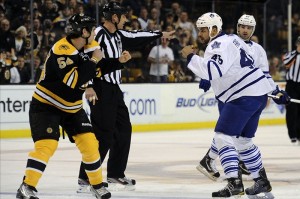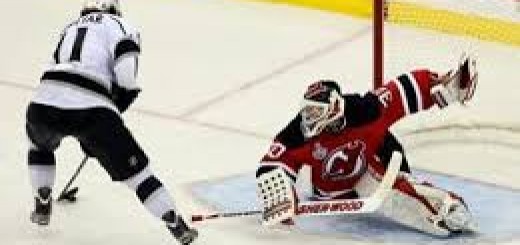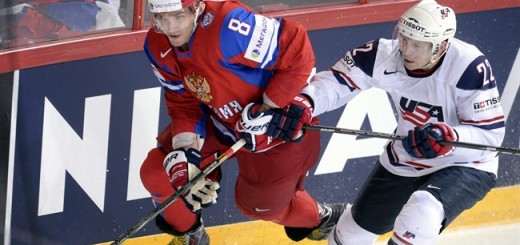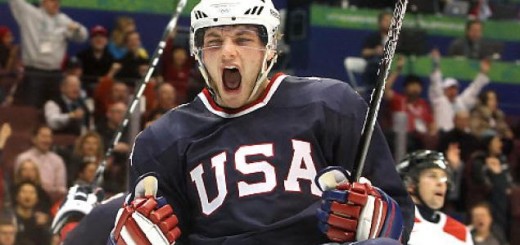
On November 25, 2013, the first lawsuit alleging that the NHL failed to adequately protect former players against the dangers and effects of concussions was filed. The lawsuit, filed in the U. S. District Court for the District of Columbia, counts 10 former NHL players, most notably former All-Star Gary Leeman, as its plaintiffs. The complaint argues the NHL is willfully committing a fraud on its players by not providing them with the scientific evidence showing a connection between contact sports and long-term brain ailments, failing to provide adequate medical personnel during games, and making rules changes that the NHL knew would increase the risk of concussions. Notably, the plaintiffs point out that the NHL condones a “culture of violence” through the marketing of big hits and fights in almost all its advertising and multimedia content. With the debate over fighting already a hotly contested issue in the hockey world, one must wonder whether the Leeman suit will one day be seen as a turning point in this debate.
Unique among the four major professional sports leagues in North America, the NHL does not penalize fighting during a game with an immediate ejection. Rather, fighting is seen as part of the game of hockey, and instead both participants in a fight receive major penalties resulting in five-minutes in the penalty box. In recent years, the NHL has tried to limit the number of fights and their potential for injury by adopting additional rules, including an automatic ejection for the third player into a fight, and most recently by prohibiting players from removing their helmets during a fight. While the NHL has taken these steps to decrease the bad publicity that arises from some fights, it still seems unlikely that the league is ready to ban fighting altogether. Fighting is a big draw for many casual fans, and the NHL has had no problem with its multimedia partners advertising and glorifying the fights and enforcers in the NHL. For example, one of the most popular features in each edition of EA Sports NHL series of video games is the fighting simulation. Each year, EA Sports seems to add a new twist to make the fighting in the game more fun, from adding additional boxing moves to allowing players to fight with the games’ virtual goalies.
While the NHL has not shied away from promoting the entertainment value of fighting, the argument for allowing fighting in the game has been based on more than dollars and cents. Proponents of keeping fighting in hockey have long argued that fighting reduces the number of cheap shots that will occur during the course of a game. In a sport whose participants fly around an enclosed area on razor sharp pieces of metal wielding graphite sticks, a player can quickly cause career and even life threatening injuries to an opponent with a well placed high stick, slash or shove. Fighting has always been seen as a deterrent to cheap shots, as players know that they will have to square off in a fight either immediately after a cheap shot, during their next shift, or the next game against that particular opponent. In addition to its role as a deterrent against cheap shots, fighting has also been seen as a way to quell the escalation of bad blood between two teams. Instead of players responding to a malicious slash or late hit with a cheap shot of their own, teams can instead square off in a fight, hash out the bad blood, and get back to playing hockey.
The basic assumption behind these arguments is that fighting is less dangerous than the increase in cheap shots that are likely to occur without the threat of a fight. The thinking has long been that a fight will lead to a black eye or some missing teeth, but cheap shots with a stick could lead to broken wrists, arms or facial bones and dirty hits lead to blown out knees, broken collarbones and possible neck injuries. This assumption, that fighting is safer than the cheap shots it prevents, is a major justification for fighting’s continued existence in the NHL. If this assumption is put into question, then the argument for allowing fighting in the NHL falls apart.
The Leeman complaint explicitly attacks that assumption, arguing that the concussions and sub-concussive blows that players receive while participating in hockey fights lead to long-term mental and neurological issues, including chronic traumatic encephalopathy (CTE). When viewed in light of the growing body of scientific evidence, cited by the Leeman complaint, showing the long-term dangers of concussions and sub-concussive blows to the mental health of players, fighting may no longer be seen as a way to protect hockey players from dangerous injuries. Instead, the calculus could shift and fighting may be seen as putting NHL players at a greater risk of long-term health problems than any high-stick or slash on the wrist could ever inflict.
If such a shift in opinion occurred, the NHL would be hard pressed not to remove fighting from the game. First, by allowing fighting with the knowledge that it puts players at a greater risk of long-term health problems, the NHL is asking for additional litigation from former players experiencing such health problems. Second, by allowing fighting even in the face of such evidence, the NHL could face an existential problem as middle class parents decide that hockey is no longer a sport that is safe enough for their children to play. A drop in youth participation not only poses a threat to the long-term quality of play, but may also decrease the fan base of the league as those youth players who would have gone on to be life-long hockey fans instead become baseball or basketball fans after spending their youth on a diamond or basketball court rather than the local ice rink.
With the increased understanding of brain injuries in sports, along with the high profile suicides of enforcers Wade Belak, Rick Rypien and Derek Boogaard, it is likely that a shift in the underlying assumption that justifies fighting in hockey, along with the general public’s attitude towards it, may occur. While the current debate over fighting has mostly seen the NHL occasionally tinker with the rules in an attempt to placate both sides of the debate, such an approach may no longer be enough to protect the NHL. The Leeman suit, along with any additional lawsuits the NHL faces for its treatment of the concussion issue, may lay bare the dangers of fighting and conclusively show that fighting’s continued acceptance as part of the game poses a threat to the long-term health of NHL players. Such a definitive finding, either in a court of law or the court of public opinion, would likely act as the tipping point that forces the NHL to ban fighting from the game once and for all.
Helpful Links:
Leeman complaint: http://melowens.com/wp-content/uploads/2013/11/NHL-Concussion-Litigation-Complaint-filed.pdf
Michael McCann: Analyzing Leeman v. NHL, the newest sports concussion lawsuit 10/25/2013 http://sportsillustrated.cnn.com/nhl/news/20131125/leeman-v-nhl-concussion-lawsuit-analysis/
Sean Mcindoe: Everything You Need to Know About the NHL Concussion Lawsuit 10/27/2013: http://grantland.com/features/the-nhl-concussion-lawsuit/
Eric Macramalla: Legal Look: The Concussion Lawsuit Against the NHL 11/26/2013:
http://www.tsn.ca/nhl/story/?id=437555



Recent Comments